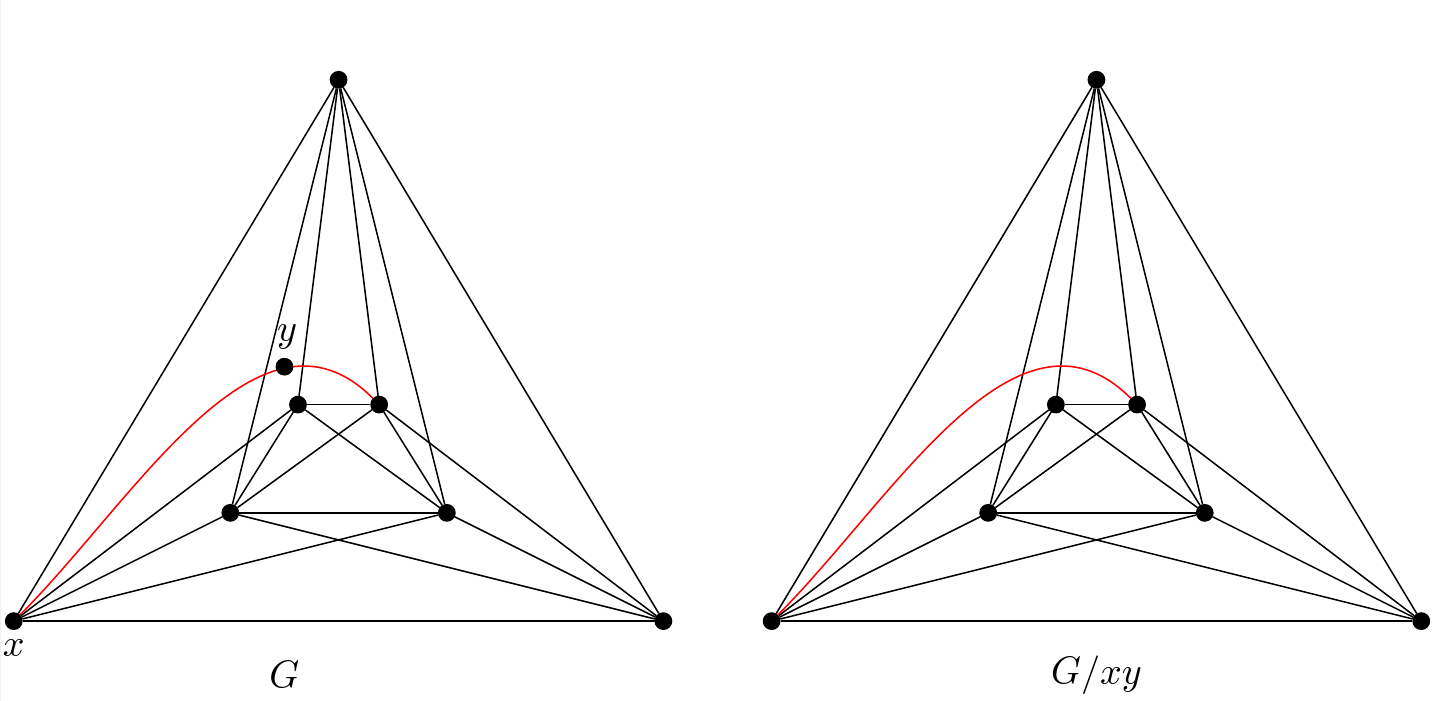A graph is $k$-planar if it can be drawn on the plane such that each edge is crossed at most $k$ times. A graph together with a $k$-planar drawing is a $k$-plane graph. Hence, by definition, $0$-planar graphs are planar.
An edge contraction is an operation that removes an edge from a graph while simultaneously merging the two vertices that it previously joined. The resulting graph is denoted by $G/e$.
The following proposition can be obtained directly using Wagner's theorem.
Proposition Let $G$ be a planar graph and $e$ be an edge of $G$. Then $G/e$ is still a planar graph.
A natural question arises:
Question 1 Let $G$ be a $k$-planar graph with a $k$-planar drawing $D$ and $e$ be a non-crosssing edge in $D$. Then is $G/e$ still $k$-planar?
I felt $G/e$ is still $k$-planar, but never knew how to prove it strictly.
I have known that contracting a crossing edge of $D$ in Question 1 may not preserve $k$-planarity.
For example. Let $G$ be a 1-plane graph on the left of the following figure. $xy$ is a crossing edge of $G$. We get the graph $G/xy$ by contracting $xy$ that is not 1-planar (see the right graph in the following figure).
PS: Note that this fact that $G/xy$ is not only not 1-plane but also not 1-planar. This fact has been proven by this paper:
- V. P. Korzhik, Minimal non-1-planar graphs, Discrete Math. 308 (2008), no. 7, 1319–1327, DOI 10.1016/j.disc.2007.04.009. MR2382367

